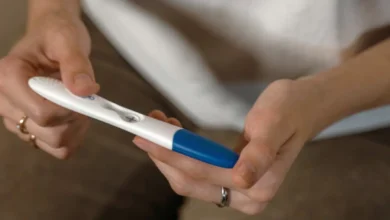The Sacral Dimple and How It Affects Children

Amid the joy and whirlwind of bringing a new life into the world, the discovery of physical peculiarities in a newborn can spark a world of uncertainty for even the most experienced of parents. Among these natural concerns are the enigmatic features such as sacral dimples, which, for the uninitiated, might seem more a cause for panic than the beginning of a deep anatomical discussion. This post is designed to allay fears, provide understanding, and equip individuals invested in pediatric health with the necessary insight to handle a sacral dimple discovery with calm and clarity.
Understanding Sacral Dimples
A sacral dimple is a small indentation in the skin, generally located just above the crease between the buttocks. They are relatively common, being found in about 2% to 4% of newborns. However, despite their prevalence, sacral dimples are not to be dismissed outright. These features, which are sometimes simple natural anatomical variations, can also be the subtle indicators of underlying concerns. How, then, can one distinguish a benign sacral dimple from one that necessitates further medical attention?
Anatomy and Causes
To fully understand the causes and significance of sacral dimples, it is important to have a good grasp of the underlying anatomy. The sacrum, which is the bone that is closely associated with sacral dimples, plays a critical role as the anchor of the spinal column. A sacral dimple can result from a skin-covered defect at the base of the spine, which may or may not indicate an underlying spinal issue.
Differentiating Benign from Concerning Dimples
For the majority of cases, sacral dimples are harmless, benign conditions. However, there are instances where the dimple’s appearance, depth, or positioning may hint at more ominous possibilities. Factors such as the dimple’s proximity to the spine or the presence of hair at the dimple site can serve as red flags, indicating the potential for a tethered spinal cord or unusually deep sinus tracts.
Associated Health Concerns

Even though most sacral dimples do not lead to health issues, it’s imperative to understand the potential risks and complications that may be associated with them.
Potential Risks and Complications
In the event of a deep or complex sacral dimple, or one that appears in conjunction with other symptoms such as fecal or urinary incontinence, foot deformities, or changes in gait, there might be an increased likelihood of an underlying spinal or neurological disorder, such as spina bifida occulta or a dermoid sinus.
When to Seek Medical Advice
Any parent viewing a sacral dimple on their child’s body and harboring any degree of unease should seek medical advice. This is especially critical if the dimple is accompanied by unusual signs or symptoms. Timely medical intervention could be the difference between catching an issue early and contending with complications down the line.
Management and Treatment
Upon discovery of a sacral dimple, parents should direct their child’s care in accordance with a pediatrician’s guidance.
Pediatrician’s Guidance
Pediatricians equipped with the latest knowledge and diagnostic tools can offer invaluable advice on managing a child’s health, including routine screenings or further tests, if necessary.
Monitoring and Preventive Measures
Depending on the dimple’s characteristics, monitoring the child’s development may be advised. In some cases, preventive measures, such as avoiding undue stress on the lower back, can be suggested as a way to safeguard against potential spinal cord complications.
Educating Parents
Given the importance of proactive healthcare, parents should be educated about the steps to take when faced with a sacral dimple scenario.
Importance of Regular Check-ups
Consistent pediatric check-ups serve as the frontline of defense against childhood health issues. Parents should use these appointments to express any concerns or report on any changes in their child’s growth and development.
Home Care Tips and Best Practices
Equipping parents with the knowledge to safely observe and care for their child’s health at home can lead to early detection of issues. Being alert to any sudden changes in the child’s appearance, behavior, or physical capabilities and promptly reporting these to the pediatrician can be crucial.
Conclusion
Understanding and addressing the implications of sacral dimples in children is a critical aspect of modern pediatric health. By fostering awareness and fostering partnerships between parents and healthcare providers, the path to ensuring every child’s optimal well-being becomes clearer. For parents, the discovery of a sacral dimple in their child should not be a cause for irrevocable anxiety but an impetus to engage with the wealth of resources and understandings available in pediatric healthcare. In conclusion, an invested, vigilant approach to children with sacral dimples, one that is underpinned by education and collaboration, is key to navigating this aspect of their growth and development with compassion and wisdom.
FAQ
Q: How common are sacral dimples in newborns?
A: Sacral dimples are relatively common, occurring in about 2% to 4% of newborns.
Q: Can sacral dimples lead to serious health issues?
A: While most sacral dimples are harmless and require no treatment, some may be associated with underlying spinal or neurological disorders. It’s important for a pediatrician to evaluate the dimple to rule out any serious conditions.
Q: What are the signs that a sacral dimple may be concerning?
A: Signs that warrant further medical evaluation include a dimple that is very large or deep, located very high or very low on the back, accompanied by a tuft of hair, skin tag, or a skin discoloration, or if the child shows symptoms like fecal or urinary incontinence, foot deformities, or changes in gait.
Q: How are sacral dimples diagnosed and treated?
A: A pediatrician usually diagnoses sacral dimples through a physical examination. In cases where the dimple is suspected to be symptomatic of a more serious condition, further diagnostic tests like ultrasound or MRI may be recommended. Treatment depends on the underlying cause if one is identified.
Q: When should I take my child to see a doctor for a sacral dimple?
A: It is advisable to have a pediatrician examine any sacral dimple to ensure it is benign, especially if it’s accompanied by any of the concerning signs mentioned previously or if you have any doubts about your child’s health.
Q: Are there any preventive measures for complications associated with sacral dimples?
A: While sacral dimples themselves may not be preventable, monitoring any associated conditions and following a pediatrician’s guidance can help manage risks and prevent complications.



